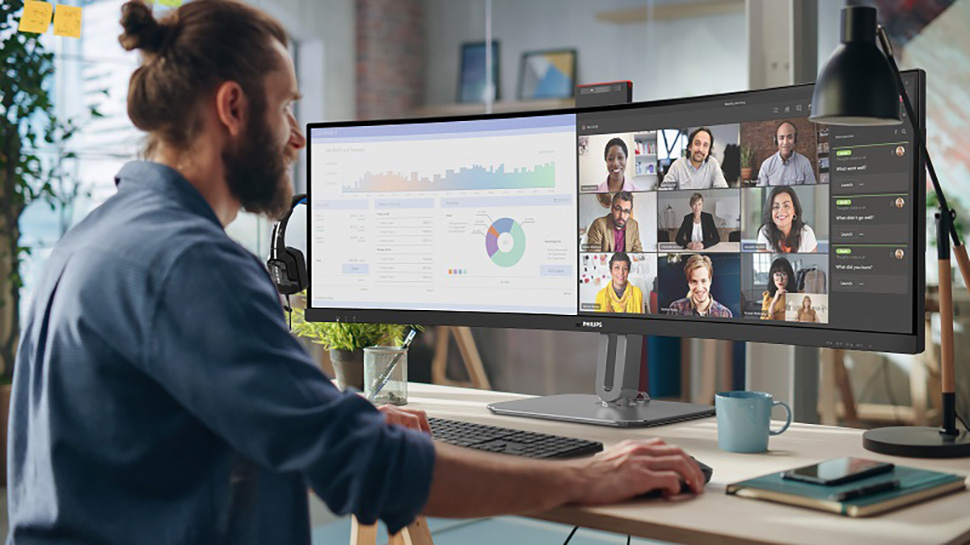Philips's newest 5K monitor comes with three features that all display vendors should copy — shame it doesn't offer a higher resolution for enhanced productivity
Features include a webcam with auto-framing, a "busylight" and Smart KVM

Philips’ most recent business monitor, the 49B2U6900CH, offers a trio of handy features for the modern digital workspace. The 48.8-inch SuperWide display sports a curved frame and boasts a 5K (5120 x 1440) Double QHD resolution, providing a wide viewing angle that would usually require two separate screens. It incorporates low blue mode with flicker-free technology and sits on a height-adjustable stand.
One of the new monitor's key features is an adjustable webcam with auto-framing. This adjusts to include all team members in the frame during video calls, and can tilt 30 degrees to accommodate users of different heights.
There’s a noise-cancelling microphone, and for added convenience, the 49B2U6900CH includes an earphone hook on the bezel, offering a tidy storage solution for headsets.
Busylight
The Busylight, positioned above the webcam, is our favorite addition and is designed to communicate the user's working status. When a user is on a call, the light turns red – reminiscent of the old ‘On Air’ lights seen outside live broadcasts. It can also be manually toggled on or off using the Busylight hotkey on the monitor bezel. The feature can sync with Microsoft Teams statuses.
We also like the Smart KVM feature. By hitting the "Ctrl" key three times, users can switch between sources, eliminating the need to navigate the OSD menus when controlling two PCs with one set of peripherals.
The monitor supports USB-C connectivity, allowing for easy charging of external devices and video/data transfer using a single cable.
The Philips 49B2U6900CH monitor is set to hit the stores in February, retailing at £959.99.
Sign up to the TechRadar Pro newsletter to get all the top news, opinion, features and guidance your business needs to succeed!
More from TechRadar Pro
- These are the best monitors for video editing
- We've also rounded up the best 5K and 8K monitors
- The world’s largest ePaper color display is gorgeous

Wayne Williams is a freelancer writing news for TechRadar Pro. He has been writing about computers, technology, and the web for 30 years. In that time he wrote for most of the UK’s PC magazines, and launched, edited and published a number of them too.